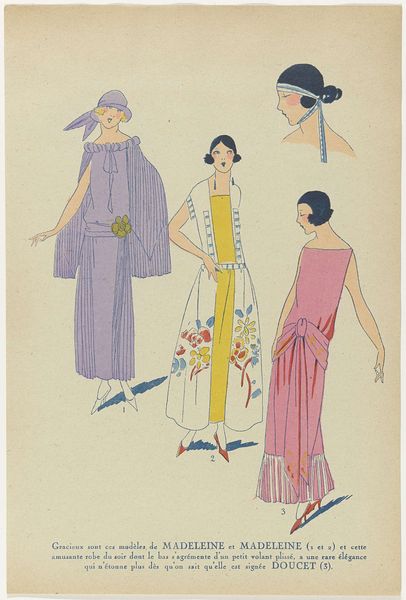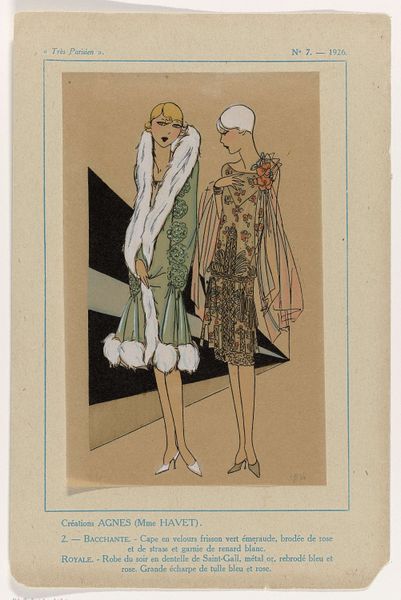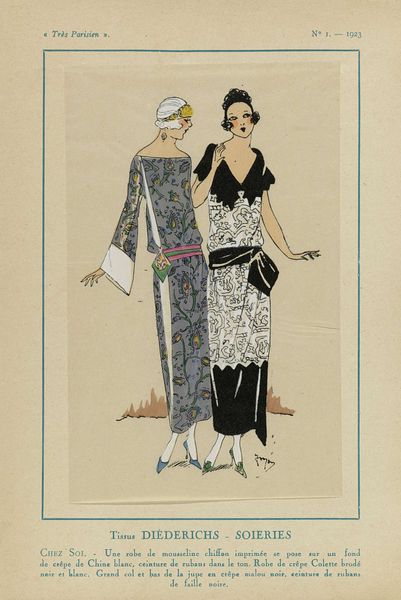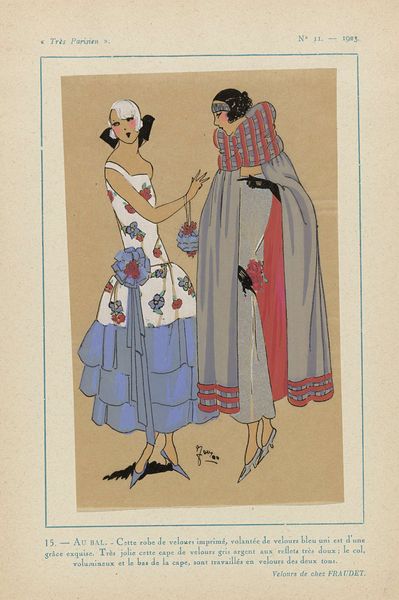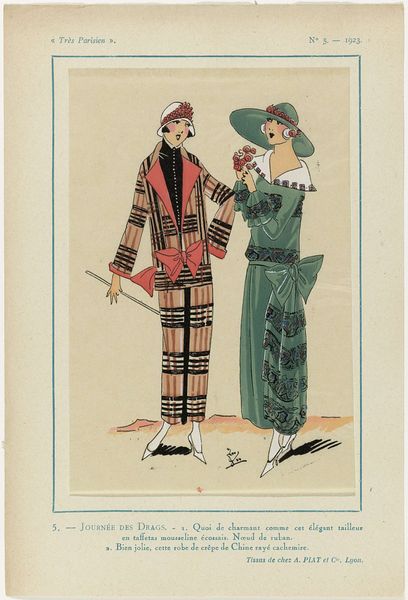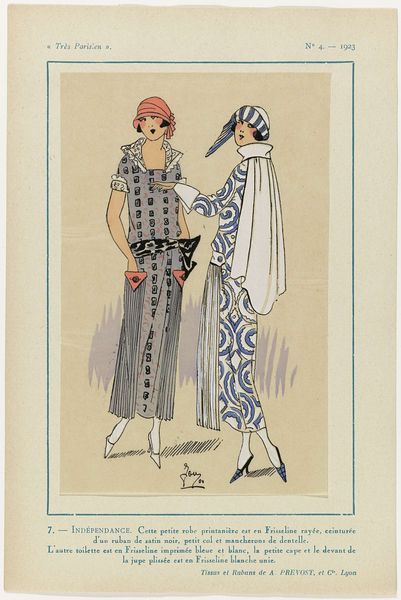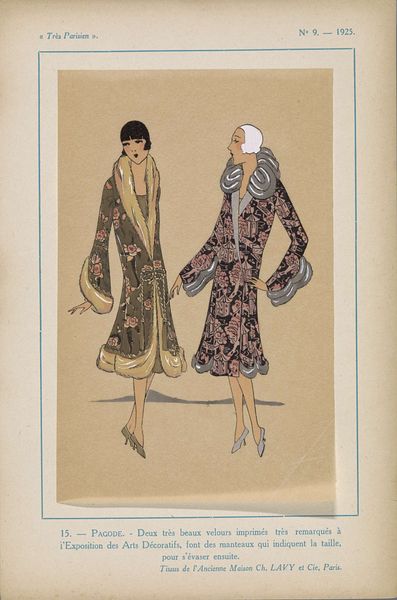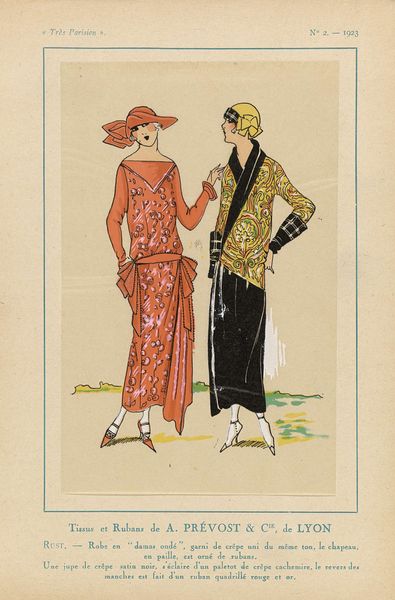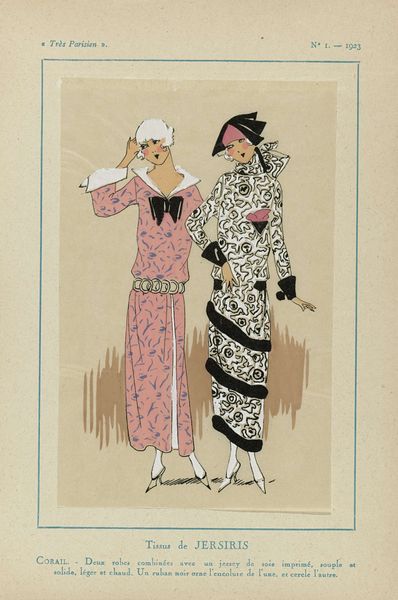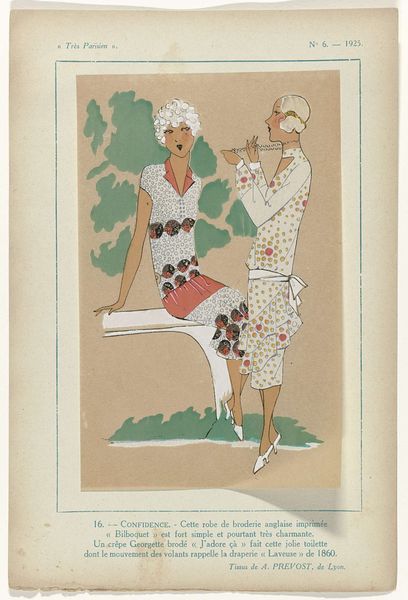
Très Parisien, 1923, No 6: Ces deux toilettes aperçues au Bois..... 1923
0:00
0:00
Dimensions: height 269 mm, width 180 mm
Copyright: Rijks Museum: Open Domain
Editor: Here we have "Trés Parisien, 1923, No 6: Ces deux toilettes aperçues au Bois..." made with ink and watercolour on paper. I'm immediately struck by how this illustration depicts the burgeoning fashion industry of the era; how would you approach understanding this artwork? Curator: I'm most interested in the means of production. This image is not just a picture; it is an advertisement, a carefully constructed image intended for consumption. Let’s consider the paper it's printed on. Its very quality and the ink used speak to a specific target audience, the rising bourgeoisie, aspiring to Parisian style. Are we looking at the birth of fast fashion? Editor: That's a great point! I hadn’t considered the materiality of advertising itself. Curator: Precisely. Also, let’s examine the text included: 'Ces deux toilettes aperçues au Bois sont en tissus de Rodier… chez Philippe et Gaston'. Here the names serve as social capital. The labour, the textile mills, and the designers producing these fashions remain invisible. How can we uncover that history? Editor: So you're suggesting we investigate the production and the socio-economic system that supported artists doing this kind of commercial work. It challenges our conventional idea of “art”, doesn't it? Curator: It certainly does! High art or popular culture? Those boundaries are challenged when considering who had access to these items. Whose labour created them? What did consuming such images communicate socially? The consumption of art itself. These details enrich our experience far more than the style itself. Editor: That perspective on materials, consumption and labour gives a great framework for thinking about how this fashion plate participated in 1920s Paris society. Curator: I’m glad you agree, by examining art’s means of production we learn not only about the artwork but its world.
Comments
No comments
Be the first to comment and join the conversation on the ultimate creative platform.
